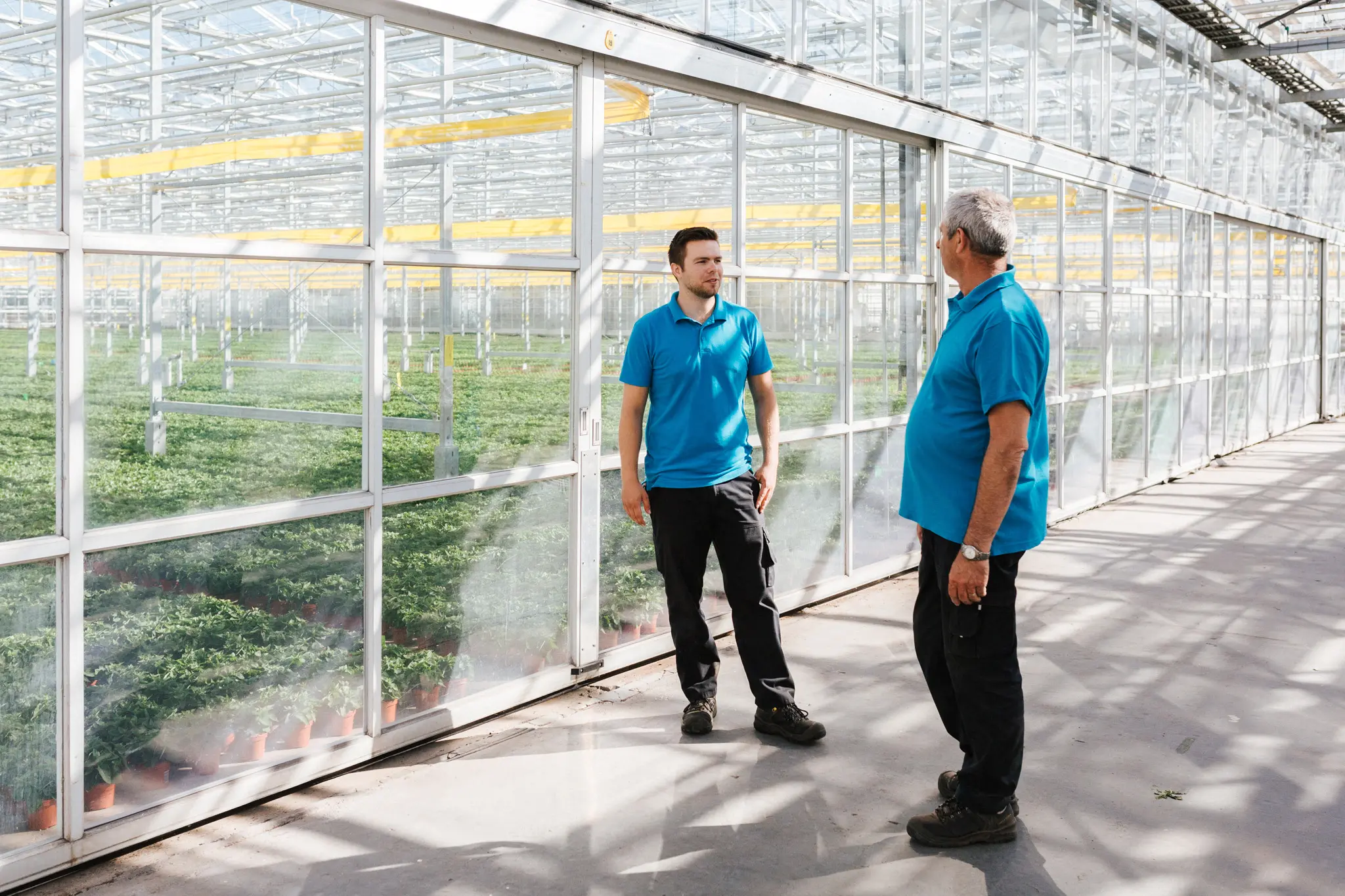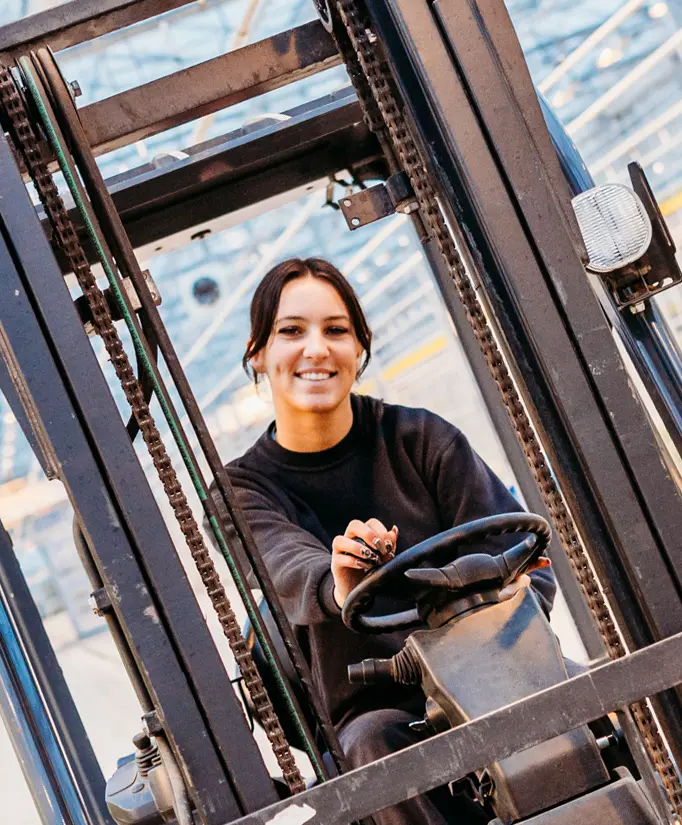News
Jos and Dianto talking about lighting, hygiene and energy
Source: HortiDaily/GroentenNieuws
Imagine being so flexible that you grow what the market demands at that moment. While not impossible, it still sounds quite complex. But that is no problem for the Dutch propagator WPK. “We currently have young ornamental plants in the greenhouse,” says Dianto van der Lugt, cultivation specialist at WPK. “But in total we have three different segments: warm vegetable plants and cold vegetable plants and ornamental plants of course.”
With this wide range, WPK can have products available all year round, with which we not only meet customer demand for high-quality vegetable plants, but also supply flowering potted plants and young ornamental plants for the most flowery holidays. “For example, we grow tomatoes, peppers, cucumbers, aubergines and melon plants for our warm vegetable segment; on the other hand, we have cauliflower and various types of cabbage such as red, white and Chinese cabbage, as well as Brussels sprouts and kohlrabi for our cold vegetable plant segment. As for the potted plants, we have Celosia, Platycodon, Callistephus and Aster,” he says.
Attention for details
Something like this wouldn’t be possible without WPK’s high-tech greenhouse. “We have a concrete floor and implement ebb and flow irrigation,” continues Dianto. “We also use additional hybrid lighting and a double screen: one for energy savings, the other for light distribution.”
Yet hygiene is the top priority, especially given the Tomato Brown Rugose Virus that is currently roaming the sector. “We are obsessed with hygiene,” he points out. “We cannot allow anything to be left to chance.”
The greenhouse is divided into different sections depending on the season and crop, but still walking through them requires extra steps. “Everyone who enters the facility has to change,” he said. “You can’t just go from one department to another without disinfecting.”
Yet keeping diseases and pests at bay is not the biggest challenge for WPK. “Light is certainly one of the biggest challenges we have here, especially when it comes to our flowers and potted plants,” continues Jos Zwinkels, cultivation specialist at WPK. The thing about light is that flowers and potted plants need to be trained to withstand different levels of light when they get to customers. To achieve this, WPK must arrange a number of things. “We start training at the beginning of the season,” he says. “In the beginning we give them enough light, but not too much. We then gradually increase it so that, for example, by Valentine’s Day or Mother’s Day, our potted plants and flowers are ready for a new environment.”
The importance of the lighting system
Because finding the balance with the lighting system is so challenging, it is also quite difficult to choose the right system. “We are still doing some trials,” he says. “But we have already seen that we are getting promising results with LEDs.” This is mainly due to the spectrum, which gives plants exactly the amount of light they need. Leaves usually become too dark when they get too much light, because they are saturated with sugars, but we have not had any problems with that yet.” In addition to the light efficiency of LEDs, there is also their energy efficiency. “If we use the screens in the evening, there is a risk that the additional lighting will cause excessive humidity in the greenhouse due to the increased heat. This does not happen with LEDs, so we not only save on our electricity bill, but also get twice as much light for the same energy input.”
Because these aspects are decisive when choosing the lighting supplier, Dianto and Jos from WPK chose Fluence. “We chose Fluence as a lighting supplier because of the quality spectrum of their lamps. The broad white spectrum allows us to grow any crop efficiently without any problems. Not all crops like a more pink or even purple LED lighting solution. Fluence’s white spectrum guarantees the best solution for the wide variety of crops we grow and propagate,” he says. “While the quality of Fluence’s lights speaks for itself, what has helped us a lot is also the constant horticultural support they provide us. Their horticulture team comes to the facility every week and checks how things are going and if there is a need to do anything.”
Dealing with the energy crisis
Vertrouwen op zo’n partner kan in deze tijden van energiecrisis en onzekerheid van doorslaggevend belang zijn. “Alles verandert zo veel elke dag,” zegt Jos. “Wat de energiecrisis betreft, moeten we al doende leren. We hebben zonnepanelen op het dak, maar dat is niet genoeg voor ons, dus we nemen ook onze toevlucht tot wat gas. Tegelijkertijd staan we, in tegenstelling tot veel telers, nooit stil. Als de energieprijzen te hoog zijn, kun je gewoon wat langer wachten en planten wanneer er meer licht is of wanneer het warmer is. Wij telen het hele jaar door en hoewel het er behoorlijk heftig aan toe kan gaan, is onze flexibiliteit ons unieke verkoopargument. We gaan tot het uiterste voor onze klanten, wat er ook voor nodig is.”
Vragen over hybridebelichting? Neem contact op Fluence. Voor alle overige vragen, bel of mail ons gerust.
Relying on such a partner can be decisive in these times of energy crisis and uncertainty. “Everything changes so much every day,” says Jos. “When it comes to the energy crisis, we have to learn by doing. We have solar panels on the roof, but that is not enough for us, so we also resort to some gas. At the same time, unlike many growers, we never stand still. If energy prices are too high, you can simply wait a little longer and plant when there is more light or when it is warmer. We grow all year round and although it can be quite intense, our flexibility is our unique selling point. We go the extra mile for our customers, whatever it takes.”
Questions about hybrid lighting? Contact Fluence. For all other questions, please call or email us.


